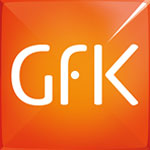German food retail industry in price war

The survey investigated 275 most popular product groups in the area of fast-moving consumer goods (FMCG) in terms of price sensitivity among consumers across Germany.
Food retailers therefore have far greater leeway in their pricing than is generally assumed. Just 40 of the investigated product groups have virtually no pricing leeway. In more than 230 product groups, consumers will even accept above-average prices if the range of goods, product performance and service are acceptable. The willingness to pay displayed by different customer segments and the individual location are also factors that determine optimal end consumer prices.
For the purposes of the survey, GfK and SAP divided the product ranges within the food retail industry into three categories: "halo" product groups, product groups offering potential for price increases and product groups offering substantial pricing leeway. Price sensitivity is highest in the "halo" category, which contains products that are regularly purchased by consumers. In these 40 product groups, which include, for example, coffee, chocolate, butter, yoghurt and fruit juices, price changes are quickly identified, with the result that even slight price increases lead to substantial declines in sales. Since these product groups are responsible for around 50% of FMCG sales in Germany, the price war between the discount stores and full-line suppliers is particularly intensive in this segment.
An opportunity for retailers to differentiate prices
However, a fall in price awareness increases the possibility of raising prices and improving margins: according to the survey, consumers have no or very few price expectations for 230 product groups, because they tend to buy these products only rarely, or when they have a special reason to do so. Examples include cleaning agents, spices, sweetener, vinegar conserves and furniture care products. Supermarkets and convenience stores, with their wide product ranges, therefore have considerable opportunity to differentiate their prices from the low price demands of discount stores.
The survey also reveals significant differences in the willingness to pay displayed by various consumer groups. In particular, high earners and older consumers are prepared to pay more if the quality and choice of goods meets their expectations, or if the shopping facility is within easy reach. There are also marked regional variations in the prices of fast moving consumer goods. Even 20 years after the fall of the Berlin Wall, the price level in former East German states remains well below the average, and the same applies to structurally weak regions in Western Germany. In contrast, high prices are set in urban centres, in the region of the border with Switzerland and in well-known tourist areas. Consequently, in addition to price awareness and the willingness to pay, the location of the individual market or branch is accorded greater importance for the setting of end consumer prices.
Competitive orientation at the expense of price potential
Price potential has not been fully exploited up to now, primarily as a result of excessive competitive orientation. In order to guard against market share losses, prices at many retail establishments are still predominantly aligned with those set by the competition. The considerable price decreases in 2009 triggered a downward price spiral that has had a negative effect on the development of the food industry, including retail, industry and production. Conversely, the survey finding is that high earners and older consumers in particular are prepared to pay higher prices. This means that in the food retail sector, willingness to pay and purchasing behaviour are taking centre stage as the most important parameters for pricing. Pricing policy in the food retail sector is therefore facing a paradigm shift. Instead of asking, as has been the case up to now, how low prices need to be in order to attract new customers, in future it will be a case of determining the maximum prices that can be demanded without losing customers.
The survey
The data for the survey Price optimisation in the German food retail industry is taken from the evaluations of the GfK household panel (GfK ConsumerScan). The data for 2009 as a whole were used as a basis. The GfK household panel regularly evaluates the purchasing behaviour of 30 000 households in Germany. A printed version of the survey in German can be ordered free of charge on www.sap.de/nah-am-kunden.
SAP AG, which is headquartered in Walldorf, is one of the world's leading providers of business software and services, which companies of all sizes in over 25 different industries use to orient their business processes towards growth and profitability. SAP applications are used by more than 97 000 clients in over 120 countries. Established in 1972, SAP is today the third-largest independent software provider worldwide, with branches in over 50 countries. For further information, go to or www.sap.com.
Source: GfK

The GfK Association was established in 1934 as a non-profit organization for the promotion of market research. Its membership consists of approximately 600 companies and individuals. The purpose of the Association is to develop innovative research methods in close cooperation with academic institutions, to promote the training and further education of market researchers, to observe the structures and developments in society, the economy and politics that play a key role in private consumption, and to research their effects on consumers. Survey results are made available to the membership. The GfK Association is a shareholder in GfK SE.
Go to: http://www.gfk.com




